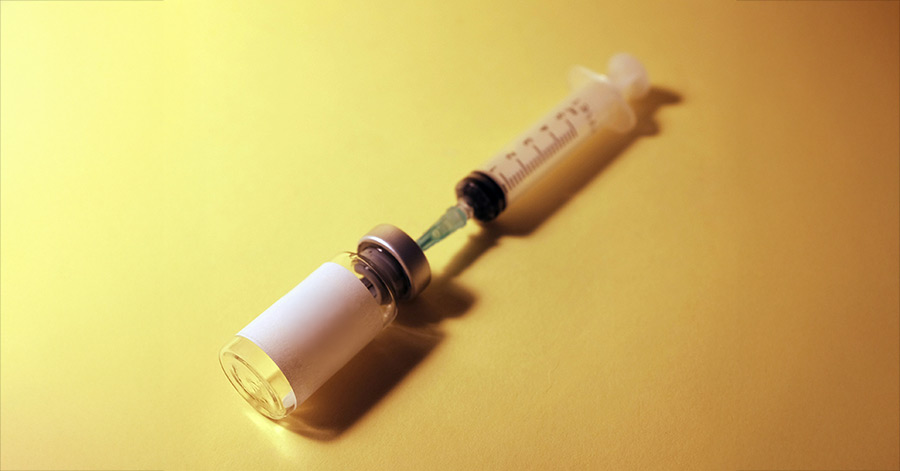
Key Takeaways
- The correct injection technique is critical to ensure semaglutide is effective and minimize potential side effects.
- In addition to the injection pen, users must have alcohol swabs, a sharps container, and bandages on hand to safely administer the medication at home.
- Semaglutide storage requirements vary by brand; Ozempic can be kept at room temperature or refrigerated for up to 56 days after opening, while Wegovy remains stable at room temperature for up to 28 days if unopened.
- Rotating between injection sites on the stomach, thigh, and arm helps reduce inflammation and discomfort, and users should avoid injecting into bruised, irritated, or tender areas.
- To avoid complications, users should never reuse needles, inject cold medication, or insert the needle at the wrong angle, as these mistakes can cause pain or reduce the medication’s effectiveness.
Introduction: Why Proper Injection Technique Matters
Semaglutide is all the rage right now, and for good reason — it works. That said, you might be one of the many people who have never self-administered an injectable medication before. If so, we know it can feel like the scariest part.
Studies tell us that proper injection technique is critical for both ensuring the medication works to its potential and reducing side effects. Luckily, injecting semaglutide is safe and simple once you get the hang of it.
You just need the right equipment and to know the proper procedure. This guide covers everything you should know about injecting semaglutide for weight loss; quickly, easily, and stress-free in the comfort of your own home.
Before You Begin
There are a few things you need to be aware of before learning how to inject semaglutide yourself. Without the appropriate supplies, you may risk injury or infection. You’ll also need to make sure you’re storing everything in an appropriate environment and preparing it safely.
Supplies Needed
Of course, you’ll need an injectable semaglutide medication (Ozempic, Wegovy, or similar) to administer it yourself at home. Beyond that, make sure you’ve got:
- Injection pen
- Rubbing alcohol or swabs to disinfect the injection site
- A sharps container so you can safely trash your used needles
- Bandages to cover the infection site
According to the U.S. Food & Drug Administration (FDA), properly disposing of sharps (needles, syringes, lancets, and so on) is priority number one because these objects are “dangerous to people and pets” if not handled appropriately.
Sharps containers are available at your local pharmacy, medical service provider, or online retailer. The FDA notes that if you don’t have a sharps disposal box on-hand, a “heavy-duty plastic container such as a laundry detergent container” can be used in a pinch.
Storage & Preparation Tips
In order for your semaglutide medication to work well, you need to store it properly. Here’s the thing — different brands may require different storage habits. Make sure you’re reading the label or instructions on your specific medication. In general, follow these guidelines:
- Ozempic injection pens should be kept in the refrigerator, but once in use you can keep them at room temperature or in the fridge for up to 56 days. If it stays out longer, throw it away.
- If not put back in the fridge, make sure the room temperature is between 59ºF to 86ºF (15ºC to 30ºC).
- Wegovy pens should also go in the fridge (between 36°F and 46°F), but you can leave unopened or unused sharps at room temperature, and out of direct sunlight, for up to 28 days.
- The same applies if you’re using compounded semaglutide. Once opened, it keeps in the fridge for up to 28 days.
Do not put Ozempic or Wegovy in the freezer. When in doubt, refer to the guidance printed on the medication’s label.
Step-by-Step Injection Guide
There’s no getting around it, injecting semaglutide can be scary. Luckily, utilizing the proper technique can reduce your risk of some side effects while also limiting painful sensations.
Novo Nordisk recommends injecting semaglutide “once weekly, on the same day each week, with or without meals.”
Each brand pen uses 32G 4mm needles; they’re as thin as two human hairs. The steps below outline the key points of using an Ozempic pen, and they’ll also work as a Wegovy injection tutorial as well.
If you’re a visual learner, check out this handy video guide instead:
Wash Hands & Gather Supplies
First things first, sanitize by washing your hands with soap and water. Clear a flat, stable surface like a counter or table and collect your supplies. You need the pen, some rubbing alcohol, bandages, and a sharps disposal container.
Prepare the Pen (Priming)
Getting the Ozempic injection pen ready is called priming. Run through these steps before trying to inject semaglutide:
- Double-check the Ozempic pen instructions to make sure the medicine is Ozempic. It should be clear and colorless.
- Tear off the paper tab, then push and turn the needle until it is tight.
- Pull off both needle caps.
- Check the flow by turning the dose selector until it shows the flow check symbol.
- Press and hold the dose button until the counter shows a “0”.
- Make sure a droplet appears at the tip of the needle.
Choose Injection Site
Generally, there are three best injection sites for Ozempic or Wegovy. You’ll need to choose between your upper arm or shoulder, abdomen, or thigh.
Make sure to not inject near a vein, or directly into muscle tissue. You’re injecting the medicine into the subcutaneous fat directly under your skin.
- Pinch Skin & Insert Needle: Gently pinch a bit of skin between your fingers and insert the needle tip.
- Administer Dose & Hold: Press and hold down the dose button until it reaches “0”.
- Remove & Dispose: Count to five and then pull the needle out of your skin. Dispose it directly into your sharps container.
Best Injection Sites (With Diagram)
You’ve got three viable options for injecting semaglutide subcutaneously. You should know that where you inject semaglutide won’t affect how well it works, so prioritize what you find most comfortable.
That said, it’s recommended to periodically rotate injection sites to reduce side effects such as inflammation.
- Stomach: Likely best for first-timers, since your stomach tends to carry a bit more fat than your arms or legs.
- Thigh: Thicker skin may reduce pain, but parts of your thigh can be sensitive if you aren’t carrying much body fat.
- Arm: You may find it difficult or awkward to inject yourself in the arm without assistance.

Pro Tips for Pain-Free Injections
If you’re still worried about injecting semaglutide for weight loss, don’t fret. We’ve got a list of pro tips that can reduce discomfort or provide additional safety:
- Make sure your injection site isn’t bruised, irritated, tender, oily, or sweaty.
- If your pen can use different needles, go for the smallest size you can find.
- You can numb your skin with an ice pack for up to 60 seconds, which may reduce pain.
- Similarly, let your pen warm to room temperature after you remove it from the fridge.
- Switch or rotate your injection sites to reduce irritation over time.
- Consider taking a hot shower beforehand, which can relax your muscles and help you clear your head.
Distracting yourself can help, too. Try putting something on television or use the “cough trick” — let out a cough just before the needle pierces your skin to momentarily distract yourself.
Common Mistakes to Avoid
While very safe overall, there’s a chance of having semaglutide injection side effects if you don’t follow the proper procedures outlined above. Beyond that, steer clear of these common mistakes:
- Don’t leave your pens or needles exposed to direct sunlight.
- Don’t try to slip the needle in parallel to the skin like you would when drawing blood; instead, pierce your skin from a 90-degree angle.
- Avoid injecting veins or pinching your muscle with your fingers.
- Make sure the medication isn’t chilled. Injecting cold semaglutide may cause stinging or cramping sensations.
- Don’t pull the needle out too quickly; count to five before pulling the tip out.
- Do not under any circumstances reuse a needle or pen.
Troubleshooting
Having issues with injecting your semaglutide medication? Here’s how you can remedy common issues or malfunctions with your supplies.
No Medicine Dispensed
Most of the time, if your pen isn’t dispensing the medication, the dial isn’t set to “0”. Double-check it to make sure. The dial should move during injection. If not, make sure your needle is in good shape and you’ve removed both needle caps.
Bleeding/Bruising
A bit of blood or mild bruising isn’t indicative of an issue. Oftentimes, small amounts of blood mean you’ve nicked a blood vessel. The bleeding should subside quickly. Similarly, pressing the needle into your skin too firmly may create a bruise — especially if you’re on blood thinners.
Dab a small cotton ball or tissue on the site of the bleeding and apply a bandage. Call your doctor if the bleeding doesn’t stop after a few minutes, or if you develop a large or painful bruise.
Pen Malfunctions
If you’re still having issues, you can run a test dose or “prime the pen” (as long as you have a fresh needle) by setting the dial to 0.25mg, hold the pen with the needle pointed upward, and press the button. A bit of the medication should pool at the tip. Otherwise, you may have a blocked needle.
Final Thoughts
Administering a medication yourself can be scary at first — particularly if it’s an injectable like semaglutide. Luckily, you don’t need to graduate med school to inject semaglutide safely. Using the equipment as directed while following simple safety procedures is all it takes.
If you’re ever unsure about how to use an injection pen or what the appropriate storage techniques for your medication are, refer back to this guide.


 Medically Reviewed
Medically Reviewed
